Africa holds nearly 69% of the world’s manganese ore reserves, yet a significant amount of high-grade resources remain underdeveloped. As the world’s richest manganese continent, core producing regions such as South Africa, Gabon, and Ghana, with their abundant manganese oxide and carbonate resources, have become a battleground for international mining giants. Manganese ore is a key raw material for steelmaking, lithium battery cathode materials (lithium manganate), and chemical catalyst production. Therefore, Africa’s high-grade resources are crucial to the global supply chain.
However, African manganese ore dressing faces multiple challenges: the differences between manganese oxide ores (pyrolusite and psilomelane) and manganese carbonate ores (rhodochrosite) require specialized processes, the increasing proportion of low-grade ore, and the industry’s pain points of tightening environmental regulations and insufficient recovery rates from traditional processes. This article will delve into how key technologies, including crushing and pre-selection, gravity separation and magnetic separation, and tailings treatment, can be used to improve both manganese ore grade and recovery.
As the world’s largest manganese ore region, Africa’s high-grade manganese ore dressing strategies primarily utilize crushing and pretreatment, gravity separation, magnetic separation, flotation, or a combination of these processes. These beneficiation solutions are applicable to Africa’s typical manganese oxide and manganese carbonate resources, providing key technical support for the production of battery-grade manganese raw materials.
Challenges of African Manganese Ore Dressing
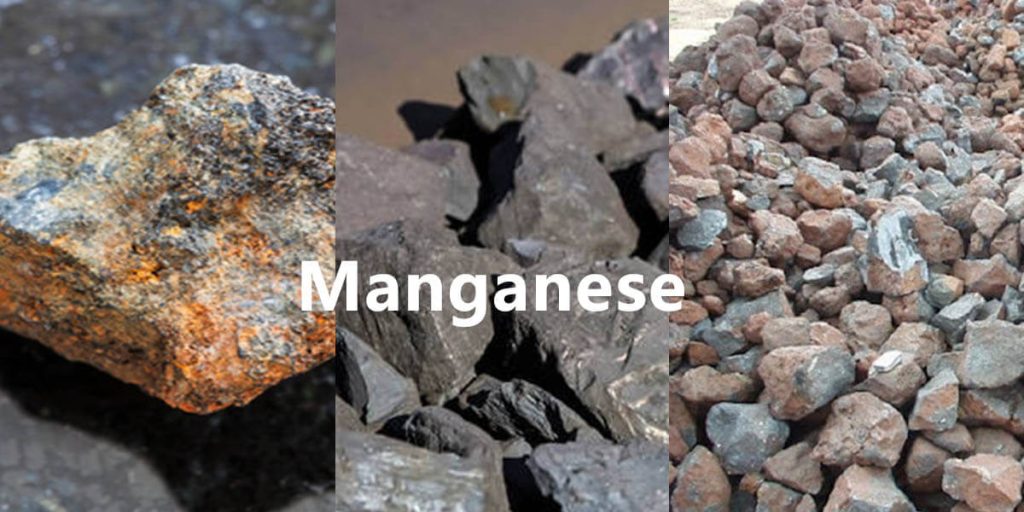
(1) Diversity of Types:
Manganese ore produced in different mining areas can be divided into two main types: manganese oxide ore and manganese carbonate ore. Manganese oxide ore, primarily found in Gabon and South Africa, has a high manganese content but often contains impurities such as iron and aluminum. Manganese carbonate ore, primarily found in Ghana and Côte d’Ivoire, has relatively few impurities but exhibits significant fluctuations in manganese grade.
(2) Complex Ore Properties:
The mineral composition of African manganese ores varies significantly. Manganese oxide ores (pyrolusite and psilomelane) and manganese carbonate ores (rhodochrosite) exhibit distinctly different physical and chemical properties.
- Manganese oxide ores: Weak surface hydrophobicity and significant magnetic differences necessitate magnetic separation or gravity separation.
- Manganese carbonate ores: Prone to mudification and similar floatability to gangue minerals, requiring flotation reagent manipulation for separation.
(3) Difficulty in Technical Adaptation:
Most miners use “single gravity separation” to process manganese oxide ores, resulting in low recoveries and annual manganese metal losses exceeding 10,000 tons. Introducing a combined process requires additional investment in grinding and reagent systems, making it difficult for small and medium-sized mines to afford the upgrade costs, creating a vicious cycle of “low recoveries, low returns, and no funds for upgrades.”
African high-grade manganese ore dressing technology
1. Manganese Ore Crushing and Pre-selection
Crushing
The crushing stage directly impacts subsequent separation results. Manganese ore crushing typically utilizes a multi-stage closed-circuit crushing system consisting of a jaw crusher + hammer crusher/cone crusher. A combination of coarse, medium, and fine crushing allows for precise particle size control while meeting the feed size requirements of subsequent pre-selection equipment.
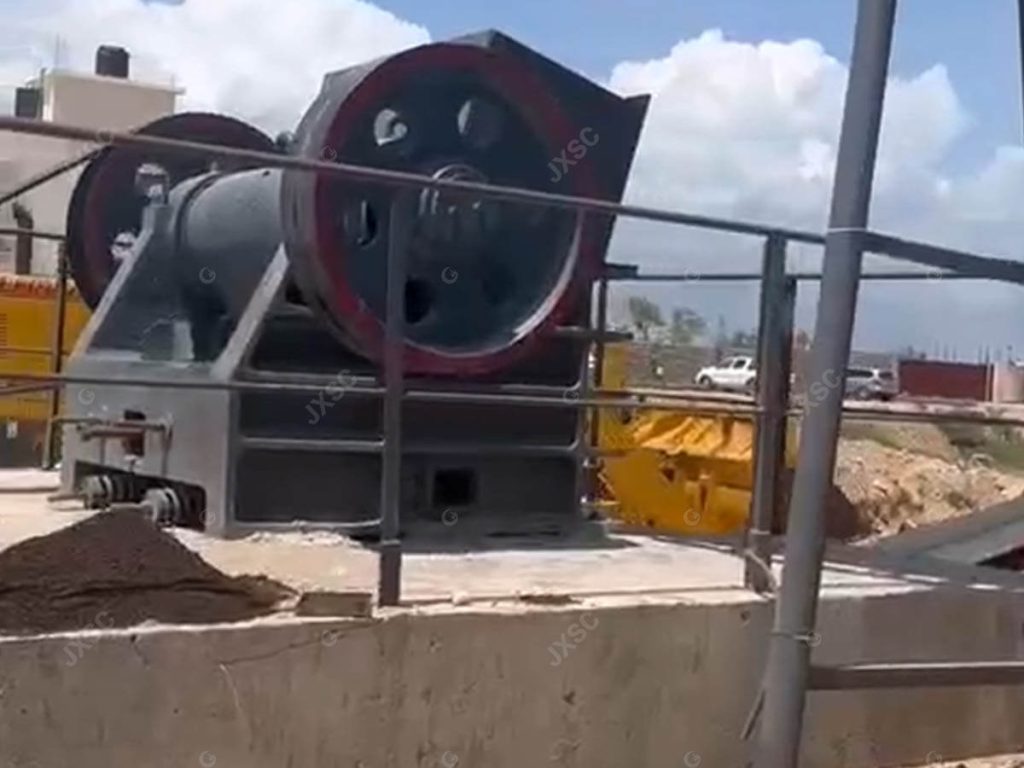
Washing
If the ore surface contains slime impurities, consider using a rotary scrubber or trommel screen to clean the manganese ore. Drum washers, for example, remove clay impurities through rotary friction and water flushing, making them particularly suitable for Ghanaian ores with high moisture content.
Classification
Vibrating screens utilize inertial vibration to separate ore particles into separate layers, achieving precise classification. For example, coarse particles (>5mm) are returned for further crushing/grinding, medium particles (1.2-5mm) enter gravity separation, and fine particles (<0.5mm) enter flotation. This is particularly suitable for African manganese ore gravity separation, as it prevents metal loss caused by over-grinding of the fine fraction.
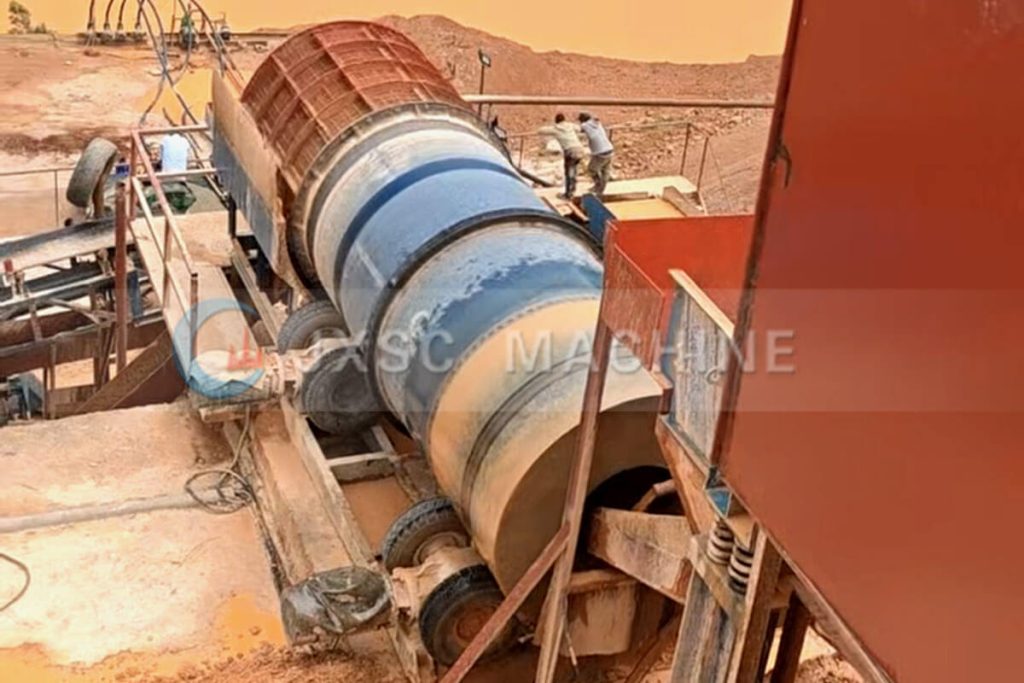
2. Manganese Ore Gravity Separation
Principle:
Gravity separation technology utilizes the density difference between minerals and gangue to achieve separation. Core equipment, such as a shaking table, uses reciprocating motion on an inclined bed surface, combined with transverse water flow, to separate ore particles according to density. High-density manganese ore settles to the bottom of the bed and moves longitudinally, while low-density gangue (2.6 g/cm³) is carried by the water flow toward the tailings. A jig uses vertically pulsating water flow to periodically loosen the ore particles. Heavy minerals quickly settle to the sieve plates in the descending water flow, while light minerals are suspended and discharged with the ascending water flow. This process requires no chemicals, relying solely on physical forces. Separation efficiency is significantly affected by particle size.
Application:
Manganese gravity separation process is primarily used to efficiently concentrate coarse-grained manganese ore. Its separation efficiency is low for fine-grained ore because fine particles are affected by the viscous drag of the water flow, resulting in a smaller settling velocity than the gangue, resulting in recoveries of less than 45%. In these cases, flotation is necessary to treat the fine tailings to improve overall recovery.
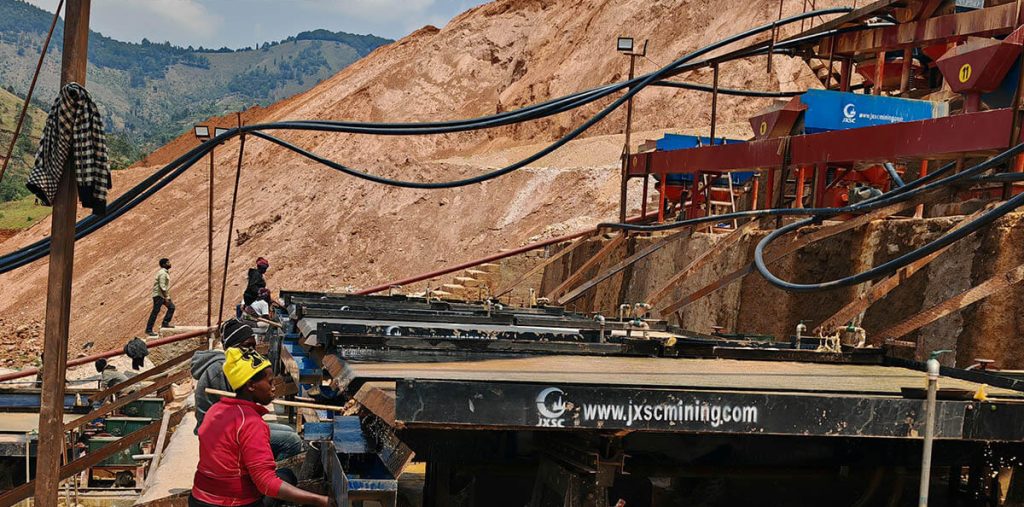
3. Manganese Ore Magnetic Separation
Principle:
The core of magnetic separation technology is to separate minerals by exploiting magnetic differences. Pyrolusite has a higher magnetic susceptibility than gangue minerals such as quartz. High-gradient magnetic separators generate a strong magnetic field gradient within stainless steel wool or grid media. As the slurry passes through the magnetic field, weakly magnetic manganese minerals are attracted to the media surface, while non-magnetic gangue is discharged with the slurry. After washing, an enriched concentrate is obtained. This process requires precise control of slurry concentration and magnetic field intensity to prevent agglomeration of magnetic particles and inclusion of non-magnetic particles.
Application:
Magnetic separation is particularly suitable for the efficient separation of South African manganese oxide ore and iron ore. Compared to flotation, magnetic separation requires no collectors or conditioning agents, reducing reagent costs by 80%.
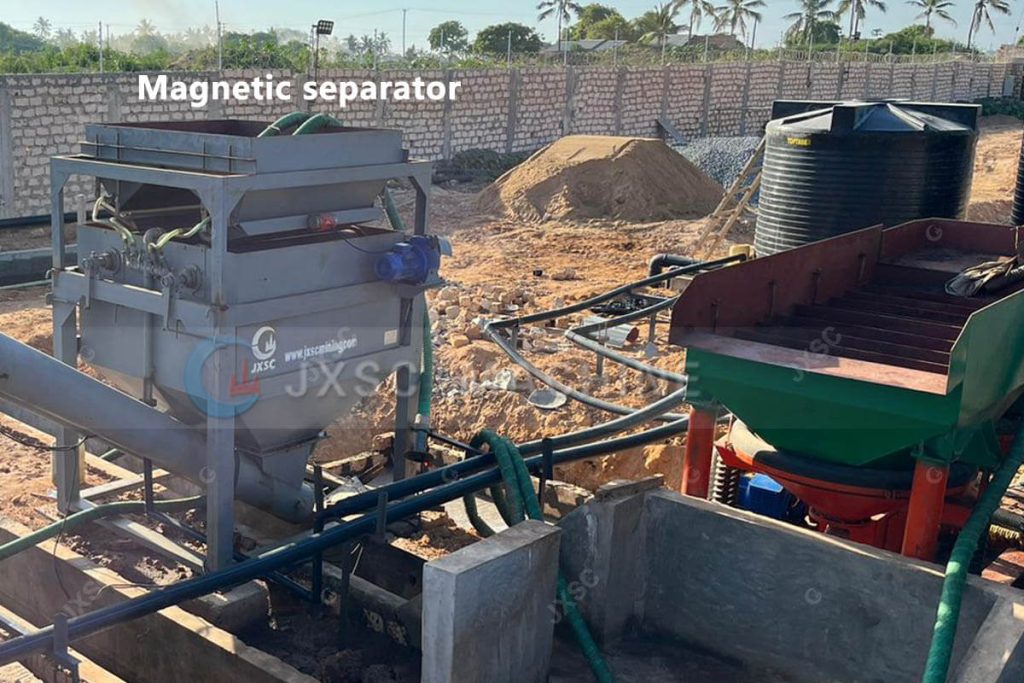
4. Manganese Ore Flotation
Principle:
Flotation technology achieves efficient separation of fine-grained manganese ore by manipulating the surface hydrophobicity of the mineral. Manganese oxide and manganese carbonate have distinct surface properties, necessitating the development of tailored reagent combinations to achieve high recovery and concentrate grade. For example, manganese oxide (such as pyrolusite) exhibits the highest degree of surface hydroxylation at pH 7-8, allowing the use of anionic hydroxamic acid collectors to form stable five-membered ring chelates. Manganese carbonate (such as rhodochrosite) exhibits the highest surface Mn²⁺ exposure at pH 6.5, making it suitable for specific adsorption by phosphonic acid collectors. Gangue minerals (such as quartz and dolomite) are suppressed by conditioning agents (such as sodium silicate) and sink with the slurry.
Application:
Flotation process is a key breakthrough in the deep purification of fine-grained manganese ore. It is particularly effective for processing manganese ores in Africa with complex intercalations or associated carbonates. After crushing and grinding, the raw ore is typically separated from the manganese ore and impurities using preferential flotation or mixed flotation processes. In industrial practice, flotation is often used in combination with gravity separation and magnetic separation. For example, pre-enrichment is performed by strong magnetic separation, followed by flotation dephosphorization, to finally obtain battery-grade manganese raw materials.
5. Manganese Ore Dewatering and Tailings Treatment
Manganese ore dewatering and tailings treatment technologies aim to remove moisture from manganese concentrate and tailings through physical or chemical methods, reducing transportation costs, improving concentrate quality, and reducing tailings stockpile volume.
- For manganese concentrate, a three-step dewatering process involving high-efficiency concentration, filtration, and drying is commonly used. The concentration stage utilizes a high-efficiency thickener, which relies on the weight of the solid particles to achieve solid-liquid separation. The filtration stage utilizes a vacuum filter or filter press to further remove moisture using a pressure differential. Deep dewatering involves thermal drying (such as a rotary drying kiln) to minimize the moisture content of the concentrate. For tailings dewatering, a combined cyclone-thickener-filter press process is often used to reduce the load on the tailings pond and recycle circulating water.
- Disposal plans are developed based on the tailings’ particle size composition and chemical properties (such as manganese content and heavy metal ion concentration). For example, high-grade tailings can be returned to the mineral processing system for tailings further processing to recover valuable elements such as manganese and iron in the tailings; low-grade tailings are solidified and the tailings water is recycled after sedimentation, neutralization and filtration, and the tailings are discharged dry.
6. Combined Ore Dressing Technology
Manganese ore combined mineral processing technology integrates the advantages of two or more single beneficiation methods (such as gravity separation, magnetic separation, flotation, and electrostatic separation) to form a segmented, coordinated separation process. This combined manganese ore dressing process addresses the challenges of efficient separation in complex manganese ore resources (e.g., fine-grained intergrowth, closely intergrown minerals, and low-grade minerals). Gravity separation utilizes mineral density differences to initially separate coarse-grained minerals, removing large amounts of low-density gangue. Magnetic separation targets manganese ore containing magnetic iron minerals, separating magnetic impurities through magnetic fields. Flotation further processes fine-grained or intergrown minerals, using reagents to enhance the surface contrast between the target minerals and the gangue.
Application:
Because African manganese deposits often contain multiple minerals (such as iron, silicon, aluminum, and phosphate), a single beneficiation process struggles to achieve both high grade and high recovery. Therefore, a combined process is a key solution. The combined technology offers flexibility and adaptability, improving recovery while meeting the needs of diverse end markets. It is particularly suitable for processing African ores with high manganese content and low phosphorus content, or high silicon content.
As a core global manganese ore producer, Africa’s efficient beneficiation technology has become an industry benchmark. JXSC’s manganese ore processing technology includes crushing, cleaning, grinding and grading, gravity separation, flotation, magnetic separation, and combined processes, providing a complete, stable processing solution for high-grade manganese concentrate. Contact us to customize manganese ore dressing equipment that is fully adapted to your needs for battery-grade manganese materials, providing the optimal solution for the efficient development of Africa’s manganese ore resources.